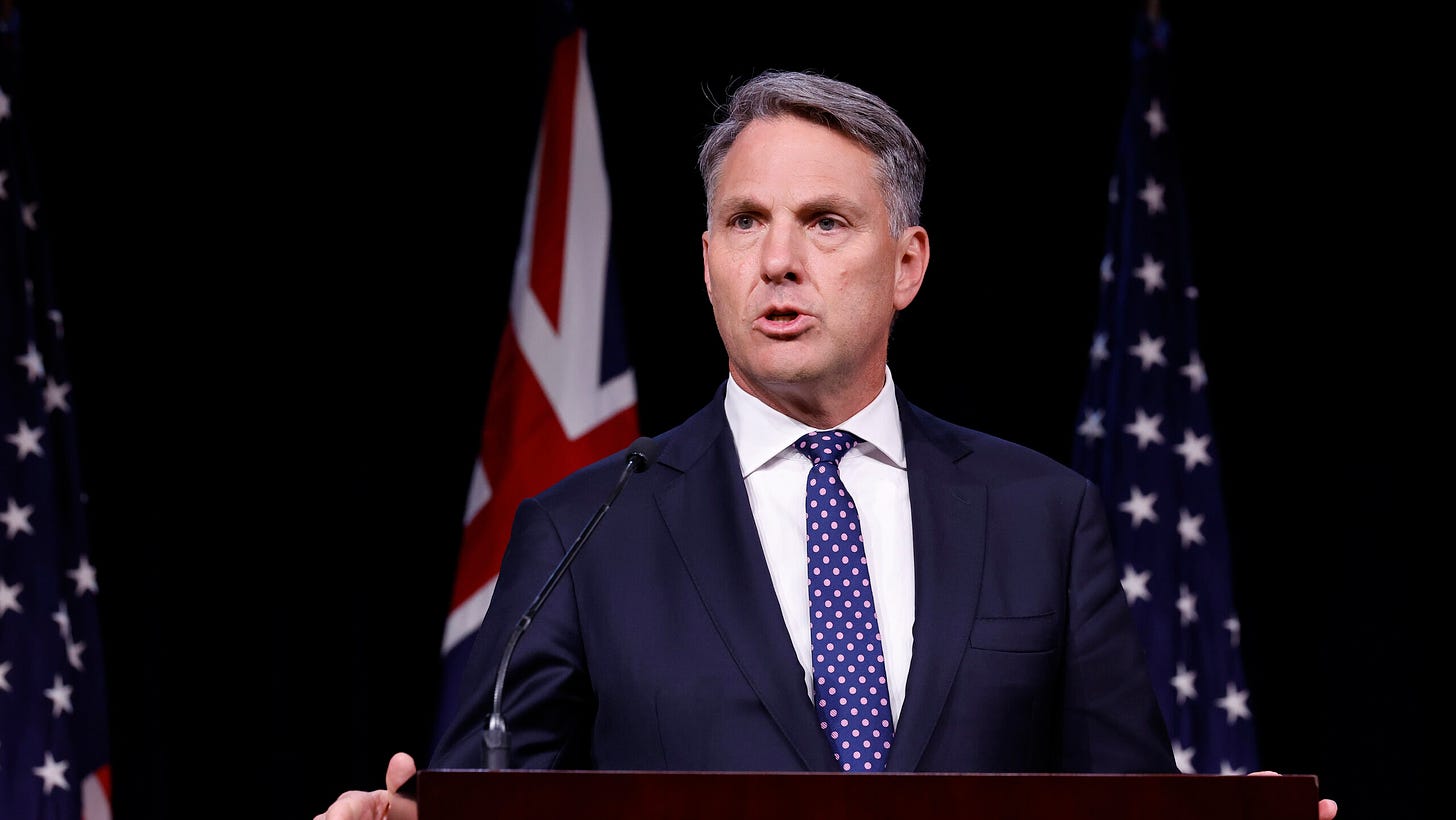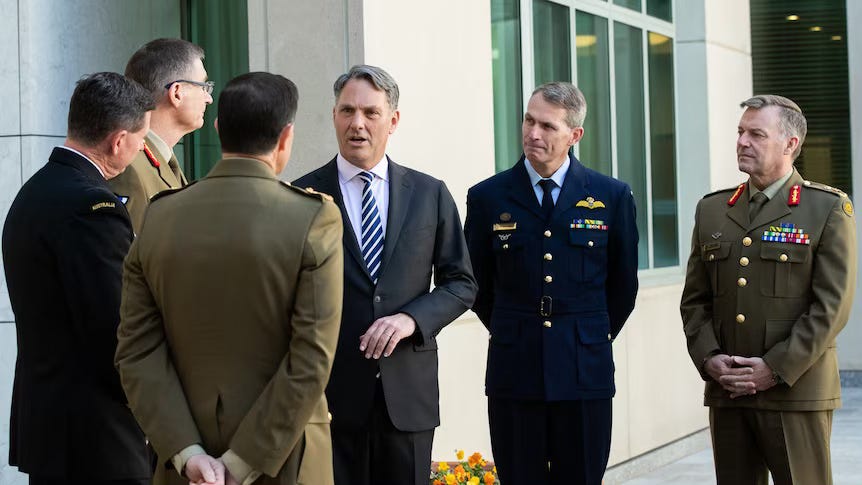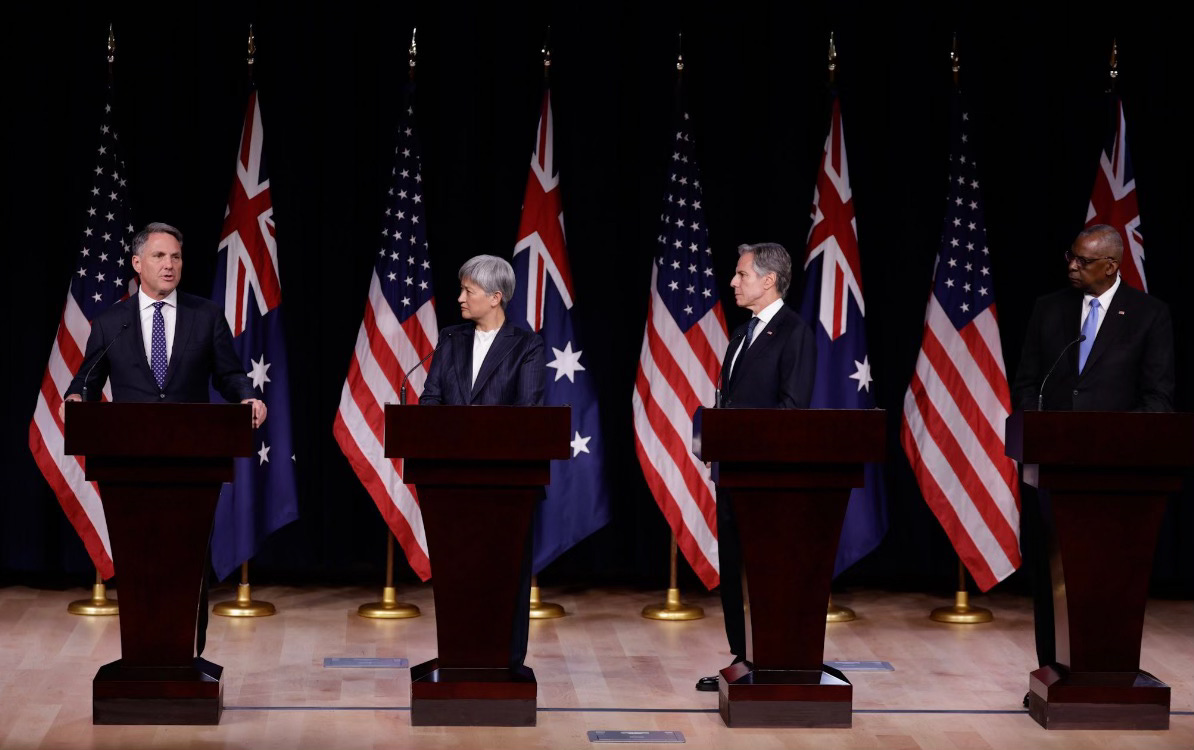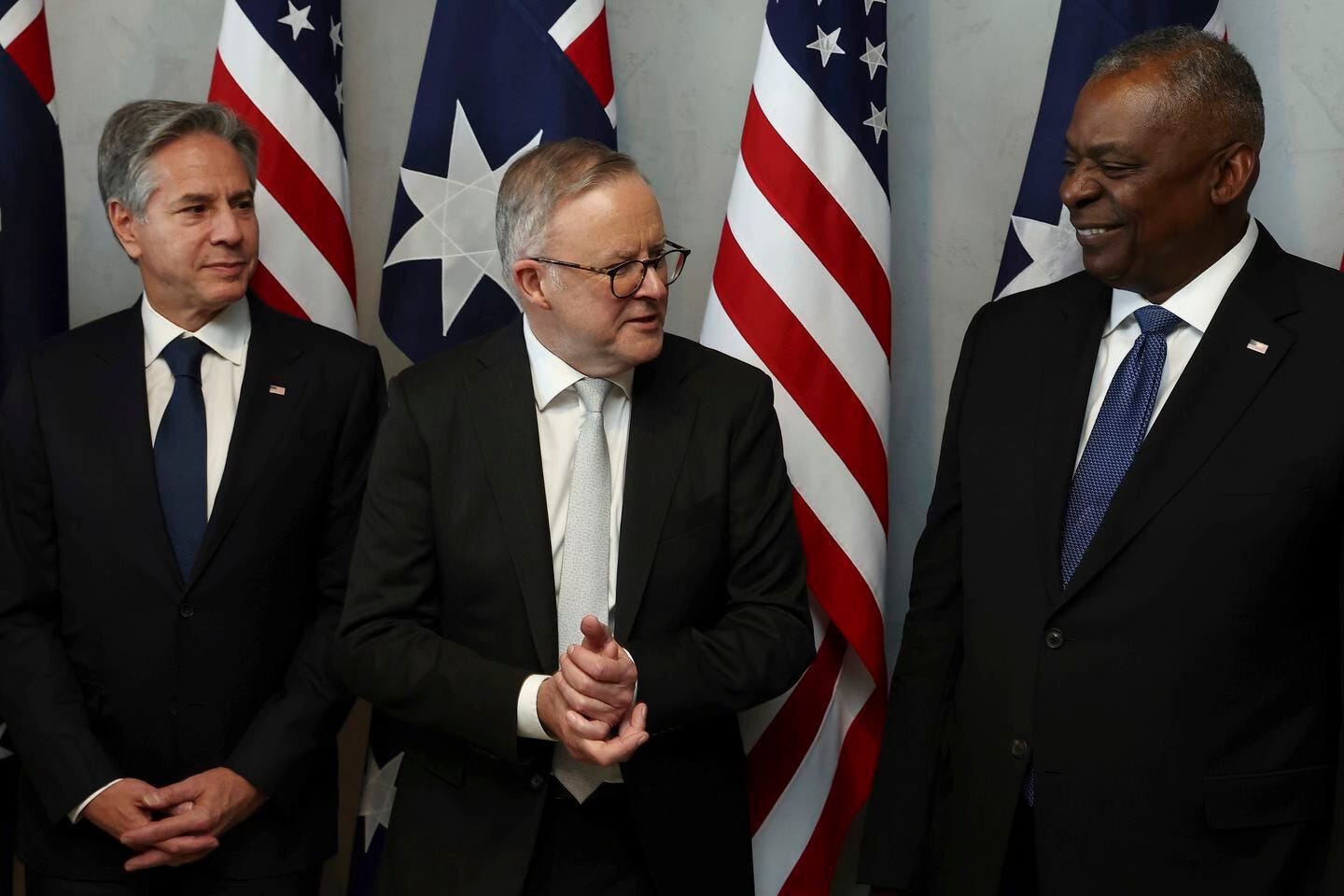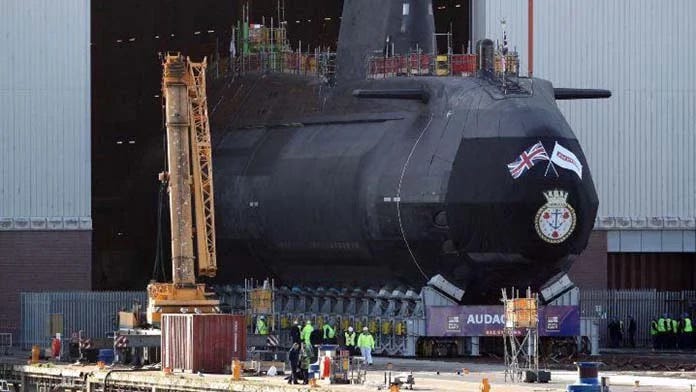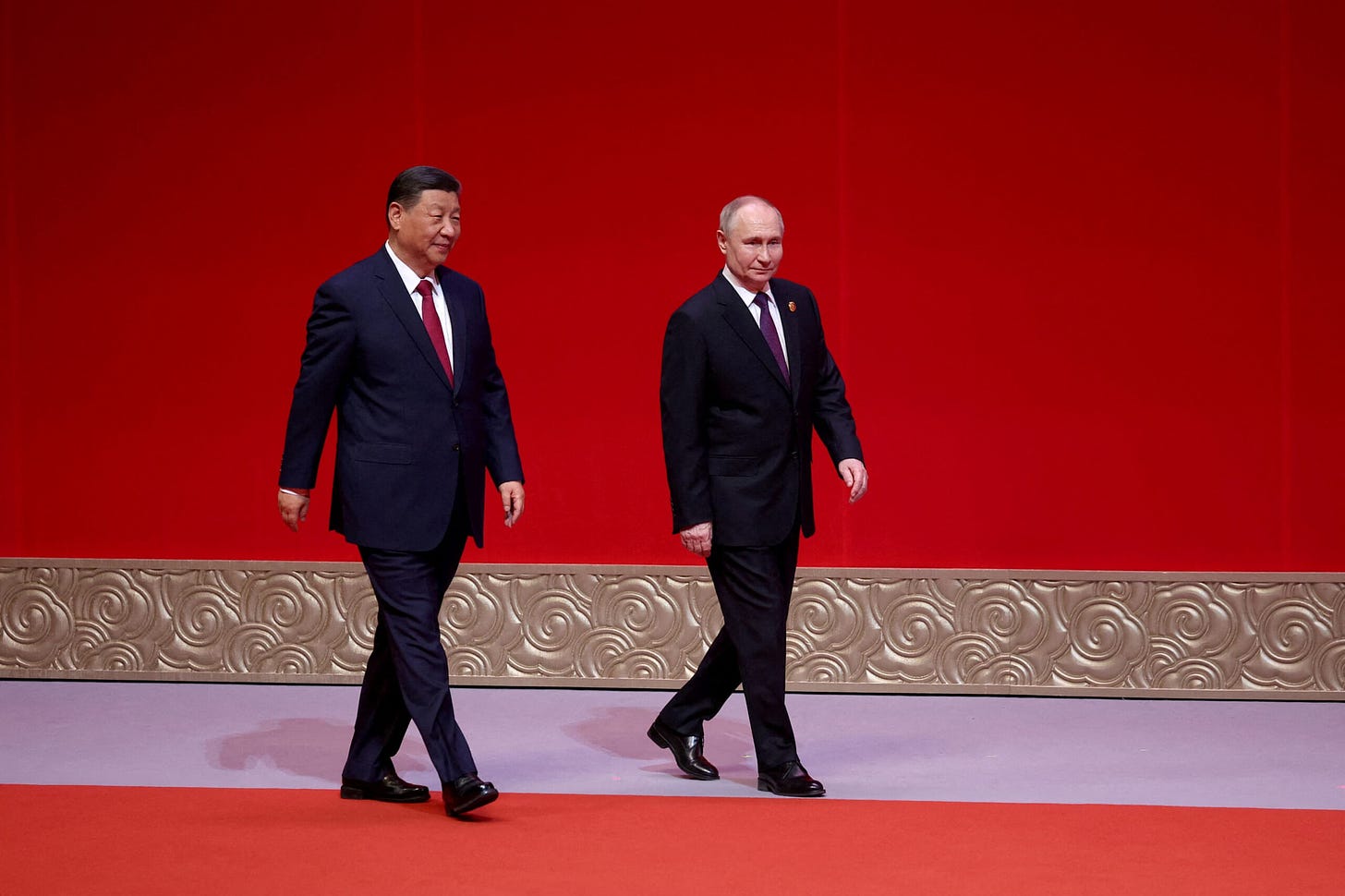Fiscal Military Double Act
34th Australia-US Ministerial Consultations (AUSMIN) announced missile coproduction & new basing agreements, Deputy PM Richard Marles and US SoD Lloyd Austin praised the “doubling down”
EXCLUSIVE: Australian defense minister Richard Marles on AUKUS, China and industry concerns
"Look, AUKUS is new. People are coming to terms with it. With anything that's new, people have anxiety," Marles said in an interview with Breaking Defense.
By Aaron Mehta
WASHINGTON — This week, Australian Deputy Prime Minister and Defence Minister Richard Marles visited Washington for the 34th Australia-US Ministerial Consultations (AUSMIN). Among announcements about missile coproduction and new basing agreements, Marles and US Defense Secretary Lloyd Austin praised the “doubling down” of cooperation between the two long-time allies.
Following the conclusion of the AUSMIN meetings, Marles sat down with Breaking Defense to discuss key defense topics for the Lucky Country. This interview has been edited lightly for length and clarity.
BREAKING DEFENSE: The build rate of Virginia-class submarines is below the number required to be able to provide for both American and Australian needs. Is that an issue you discussed with your counterparts during this trip, and how do you get that issue resolved?
RICHARD MARLES: Not specifically on this trip, but we talk often about this, and it’s very central to the pathway that we’ve agreed. It’s why we’re making a contribution, obviously, to the American defense industrial base, to help get the uptick in the rate of construction, or to better put it, the availability of Virginias for America, which is what creates the space to enable America to be able to sell the Virginias to us. The initial Virginias will be in-service Virginias, and then later they will be new Virginias. It is the rate of production, which matters to us, but it is also the rate of maintenance as well, and sustainment. Is it challenging? Yes. Did we know it was challenging? Yes. Are we confident about our ability to meet the challenge? Yes, is the answer.
It’s a big thing for us to make a contribution to the industrial base of another country. It’s almost unprecedented. And you can imagine, we got questions at home as to why on earth would you do that? And the point that we’ve been making is because, you know, there is no current magical showroom with Virginias on the shelf, and the American system is under pressure. And if we want this, and we want it in the timeframe which enables us to not have a capability gap, which means getting Virginia’s in the early 2030s, then this is the step that we have to take. The story hasn’t changed, is what I’m trying to say.
In those discussions you have with US government or industry, what’s the feedback you’re getting? Is there a sense there is a workable solution or is the answer just that the US budget has to go up?
I think everyone wants to make it work, and I think there’s a sense of confidence that we can. I really do. And in all the budget decisions that have been taken by the US, there’s been excellent engagement with us about what decisions have been taken, what they mean, what they mean for us and, in essence, that everyone’s still completely onboard and directed to what we’re trying to do. So, we do have a sense of confidence that, yes, it’s challenging, which we knew, but that this thing is fundamentally on track.
The US State Department still hasn’t certified that Australia is meeting required standards that would ease export control limits, something we had expected to come months ago. Do you have a sense of when that’s going to happen, and at what point do you start getting concerned there is some hangup there?
We’re not concerned with — we’re confident that that’s all happening, as it has been intended to, is the short answer. So you know, we’re working closely with [the US government] and confident that’s all in hand.
Do you have a sense of timing on it?
I don’t. I mean [pause] yes, but I want to reflect the timeframe. And so any answer I give you, you’ll find deeply unsatisfying. Soon. Soon.
Ok, let’s talk Pillar II then. At a fundamental level, how do you define success for the Pillar II effort?
Success means meeting the terms of as has been described, and that means that at some point we need to be looking at new, cutting-edge innovative capabilities that have gone into service more quickly because of Pillar II cooperation. That’s the test, that is what Pillar II is about, and so therefore, that is how the three of us will collectively be charged as to whether it succeeded or not. I’m confident that there will be success in this and that there are technologies in the categories of those that we’ve described, which are genuinely groundbreaking —which again, is a bit of a communications challenges in terms of how to explain that to people [due to classification]. But you can see the work that’s being done is actually bringing these things into service more quickly.
I think we do need to look at how we can have our systems more harmonized to drive this in an enduring way. And, you know, that’s, I think, pretty natural that we’d be going through a process of how we can do that. Everyone wants to see Pillar 2 succeed. And we’re all thinking about, what is the architecture which will enable that. So I actually think there’s a really effective conversations going on, relative to Pillar 2. And, you know, those — well, they’re not, I mean, bureaucratic, they’re really legal, mechanisms that need to be put in place, and kind of administrative mechanisms — you know, they are fundamentally important.
Getting those legal frameworks and structures right is foundational in actually us achieving what we’re trying to achieve. And I think there is more work for us to be doing, which we all understand, [and are] thinking through what that looks like.
Is there anything more you need from the US Congress to make that happen?
I don’t think it’s at that point yet. And to be honest, I probably need to take advice on terms of the system here, around what changes require congressional pressure. But I certainly think there is more work to be done. The power of the idea of Pillar II is profound. And you can see that by virtue of the number of other countries who are keen to be a part of it. So, it’s not done yet, there is work to be done here on Pillar II, we all acknowledge that. But I’m confident we’ll get there, because we’ll get what the benefit will be if we can achieve it.
In April, the three AUKUS nations announced they would start “consultations” with Japan about taking part in Pillar II. Do you anticipate a similar formal statement to come for other Pillar II potential partners, such as Canada, New Zealand or South Korea?
We have said, we absolutely imagined that Pillar II could grow. But what we’ve got to make sure of is that we get Pillar II into a place where there is something to, kind of, offer. I think what’s really important is that we get this better down amongst the three of us first, so that we really know what the architecture of our collaboration looks like, and what the specific projects are. When we did the AUKUS defense ministers meeting last December, this was the focus — not so much the expansion but how we get Pillar II going. It’s made really good progress since then.
What we said in April was really a reiteration of that, that we would look to Japan in terms of beginning consultations. But yeah, I mean Canada’s demonstrated interest, New Zealand, Korea, and I think conversations with them will happen. It’s just about, our priority needs to be getting Pillar II in order.
It feels like, at least in the public, there’s a little bit of confusion about Pillar II and how it works bringing in other countries. Does there have to be a formal, “You are now part of Pillar II” statement, versus something like, “We’ll work with country X on this specific project?” How do you view that and do you think there’s any confusion with the partners that you talk to about what “being in” Pillar II means?
Look, I get the question. But when we say that we are beginning consultations with Japan, it really is to look at how this might work. [It’s] something that, there’s an open mind around and then there’s a desire to want to have that conversation with Japan about how that might work for them as well. So it’s just, it’s not settled yet, but, that’s not the same thing as confusion. It’s not like people are in different places about what this means. We’re working through a process with Japan around how it could work.
And that, against the backdrop of the fact that what the three of us understand is that we really need to — yes, there is interest in AUKUS Pillar II. That is a good thing, it does speak to the power of the idea. We don’t want to be closed, hence we are having consultations. But what we need to focus on is making sure that we get Pillar II working amongst the three of us. And you know that is both the specific technologies and projects that are being done, and the architecture which underpins it.
So you think it’s important to make sure that everything is laid out, organized, bureaucratically cleared between three and then potentially you can look elsewhere?
Yeah I mean — Pillar I is conceptually simple. I mean, it’s a big challenge, but conceptually it’s simple. This is Britain and America working together to provide us with a nuclear-powered submarine capability. Pillar II is the three of us working on advanced technologies at the highest level. That is a clear idea, but there are so many different ways you might do that, that really we’ve got to work our way through what the architecture looks like.
We are, in terms of the specific technologies that we are chasing, further down the track and the meeting that we had in California last year was, I think, important in terms of laying out those technologies. So what we’re chasing, we’re clear about. That there is work that’s being done on in each of those specific technologies, that is happening at a pace. I think the thing that we’ve been talking a bit about in the last couple of days is that, kind of, building the architecture, which would be the engine room for this going forward.
There have been some complaints from local Australian defense firms that AUKUS is going to result in them losing out on jobs. What do you say to those concerns?
Look, AUKUS is new. People are coming to terms with it. With anything that’s new, people have anxiety. But actually, the more we talk to people about it, and the more that we explain what [and] how this will work, Pillar I and Pillar II, [that] it affords much greater opportunity for work in Australia than the opposite. AUKUS, in the Australian defense industry sense, is going to really drive the biggest uplift in the Australian defense industry that we’ve seen. And I think we are getting that message across to local companies.
I mean, you know, we get that there is a communications challenge in that as well, but we’ve got time. And as we’ve been going through, I think increasingly people are seeing how this can work for them, both in terms of sustaining submarines in Australia, building submarines in Australia, but contributing to the supply chains of building and sustaining of submarines [in the US] and in Britain. That’s ultimately where we want to get to, and that’s a huge opportunity for Australian companies.
There have been a number of incidents with China recently, and in comments this week you made clear you view the threat of Chinese aggression as an acute issue for your government. What is your sense of the biggest risk there?
There have been a number of incidents, which obviously we have made public. And we’ve, in making them public, made clear that we have regarded those incidents as being both unsafe and unprofessional. And that’s the criteria that we use before we do make something public. The important point to make is that we will keep doing the work that we are doing in our part of the world around us, serving the rules based order, and we’re not going to be deterred from that.
I suppose the other point to make if we’re talking about China is, you know, we’ve sought to stabilize the relationship with China and we’ve had some success in that. Part of that, a key part of that, from a security point of view has been around resuming the defense dialogue. It’s not going to resolve the fundamental issues between our two countries, but hopefully it does mean that we better understand each other’s behaviors and our military point of view.
We would like to see that move forward faster in terms of — there’s been some low-level recommencement of that dialogue, but it’s not where it used to be. And we would like to get it back there. We were encouraged by the comments of [Chinese Premier Li Qiang] when he visited Australia, specifically in relation to the defense dialogue.
So that’s the question — you know, there is definitely more room for us to improve our understanding of each other and what our behaviors are and I hope that can reduce miscalculation. This operates at a couple of levels. That’s the kind of micro level but the macro: We have differences. When we’ve talked about stabilizing the relationship, you know, our mantra is that we cooperate where we can, disagree where we must. And there are places where we must disagree.
As we speak, Australia is conducting a FONOP with the US, Philippines and Canada. That follows a similar exercise with Japan, Canada and the Philippines. Are those kind of multi-national efforts something we should expect to see more of going forward?
Certainly we feel there’s value in that. I mean, what it does is demonstrate that it’s not just one or two countries, but that there is an interest amongst many nations to see the rules-based order maintained. And, you know, all of us do have a stake in the global commons, which the high seas are.
We do this work on our own, but it is important, I think, the more that we can do it with others, the better as well. Hence the fact that this is a really good exercise that we’re doing right now. So I suppose that was a long winded answer your question: We definitely look for those opportunities.



